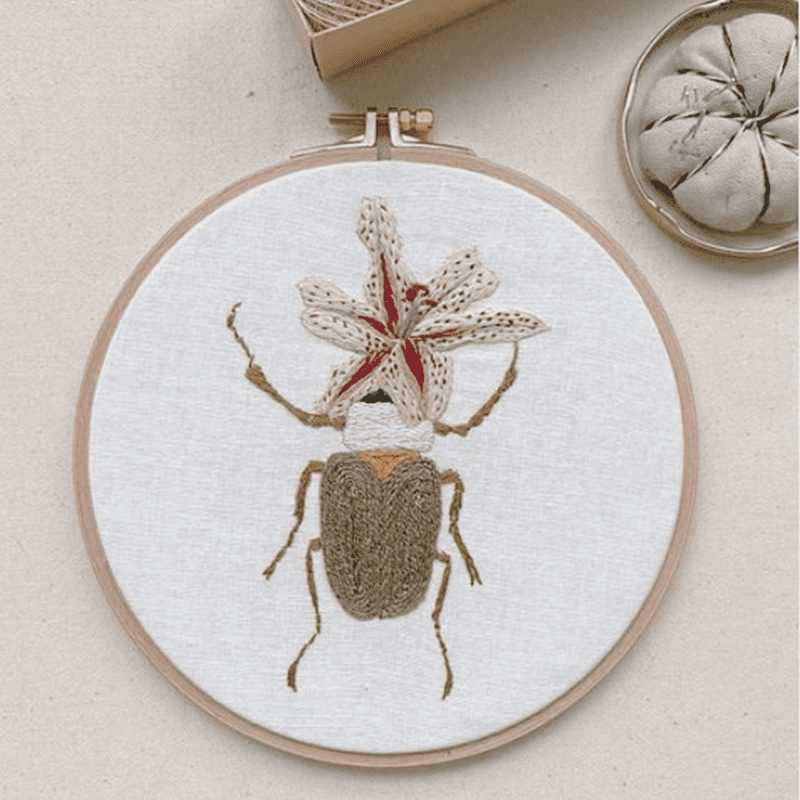
GINTAUTĖ RIABOVAITĖ, EMBROIDERER


GINTAUTĖ RIABOVAITĖ, EMBROIDERER
I began embroidering when the first quarantine was announced in Lithuania. It was a completely new activity for me, I felt inspired to create embroidered pieces that captured people’s stories.
Soon enough, a woman approached me seeking an interior accent for her new home. She wanted it to convey the idea that change is the only constant in life. Together, we explored several options, and ultimately agreed upon a design featuring a beetle with a flower emerging from its head.
I started embroidering. It was one of my first orders, so I paid close attention to every detail, palette, colors, stitches. Throughout the process, I kept the client updated by sending pictures and seeking feedback. I was ensured that every element was just right, and if something didn’t quite fit, I unraveled my embroidery and started all over again.
It took me almost 20 hours to complete the embroidery. I calculated my hourly rate to be about 70 cents. I didn’t include the time spent discussing, sketching, and fine-tuning the design.
Once I finished the piece, I sent her a photo, but she ultimately decided she no longer needed it after consulting with her husband. They felt the piece looked too romantic. I became nervous and uncertain about what to do next, but suggested that she keep the piece and live with it for a while, as it may grow on her over time. However, a few weeks later, she wrote to me that the embroidery still wasn’t quite suitable.
I didn’t know what to do. I read all our previous messages and double-checked to ensure that I received her approval at every stage, I did everything according to her wishes.
Although I was frustrated about the wasted time and effort, I found it very difficult to compose a message requesting payment for the completed work – 80 euros, which included my handiwork, materials, and taxes. I didn’t feel I deserved the money. I suggested donating half of the amount to the Sengirė Fund. We agreed, and I received the payment.
Even after a year and a half, I still feel a lump in my throat whenever I look at that embroidery. I can’t help but wonder where it is now, whether it’s hidden away in a drawer or given to someone else. I can’t shake the feeling that I did something wrong, created a piece of rubbish that no one needs. The work exists, but no one loves it.
I used to work in non-artistic fields and struggled to show my creations to others and price them. It was like a slap on the face, it made me lose confidence. I felt betrayed, confused, and hurt. Although my embroidery skills have improved over time, I still encounter people who fail to appreciate the value of handmade items and question my prices, suggesting that machines can produce similar work for like three euros.
After finishing her art studies, Gintautė Riabovaitė sold car parts for a living before taking up embroidery during the quarantine. Today, she uses thread to bring people’s dreams to life, creating unique designs on clothing and other surfaces. She shares her home with a cat named Murkel Kittler, who even has its own Instagram profile.
Interview by Juta Liutkevičiūtė
Translation by Emilija Ferdmanaitė
Portrait by Paulina Vaitkevičiūtė